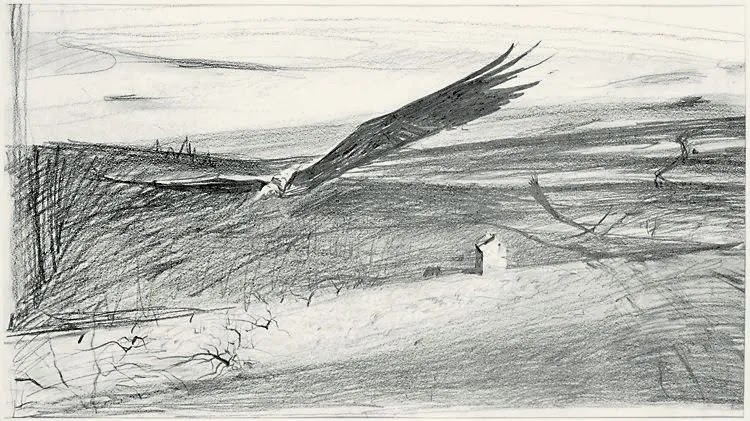His father, N. C., gave him art lessons as a child, during which he developed the skills to create landscapes, illustrations, works of figures, and watercolor paintings. His brother-in-law, Peter Hurd, taught him to use egg tempera.
In his art, Wyeth's favorite subjects were the land and people around him, both in his hometown of Chadds Ford, Pennsylvania and at his summer home in Cushing, Maine. He made a collection of about 300 paintings of windows which were presented in the National Gallery of Art's 2014 exhibition, "Andrew Wyeth: Looking Out, Looking In". In the 1960s, he began to paint portraits of family members, friends, and neighbors. Wyeth often said: "I paint my life."
Summarizing the variation of opinions about his work, art historian Robert Rosenblum said that Wyeth was the "most overrated and underrated" artist. He was known for his skill at creating watercolor and tempera paintings that engage one's senses and emotions. Christina's World became an iconic image, a status unmet by even the best paintings, "that registers as an emotional and cultural reference point in the minds of millions." Among the awards and honors that he received since 1947 are the Presidential Medal of Freedom and Congressional Gold Medals and he was elected to Britain's Royal Academy. More on Andrew Newell Wyeth
Please visit my other blogs: Art Collector, Mythology, Marine Art, Portrait of a Lady, The Orientalist, Art of the Nude and The Canals of Venice, Middle East Artists, 365 Saints, 365 Days, and Biblical Icons, also visit my Boards on Pinterest
Images are copyright of their respective owners, assignees or others.
Some Images may be subject to copyright
I don't own any of these images - credit is always given when due unless
it is unknown to me. if I post your images without your permission, please tell
me.
I do not sell art, art prints, framed posters or reproductions. Ads are
shown only to compensate the hosting expenses.
If you enjoyed this post, please share with friends and family.
Thank you for visiting my blog and also for liking its posts and pages.
Please note that the content of this post primarily consists of articles
available from Wikipedia or other free sources online.





No comments:
Post a Comment